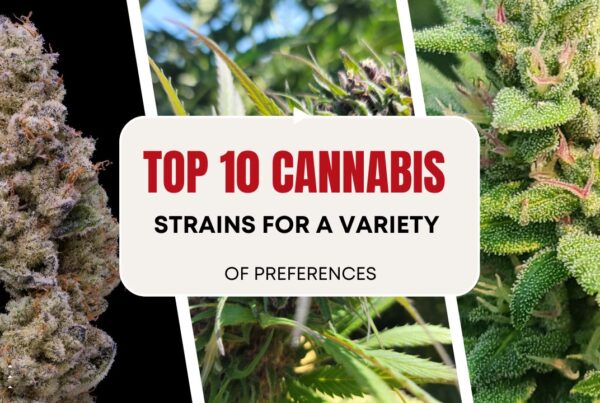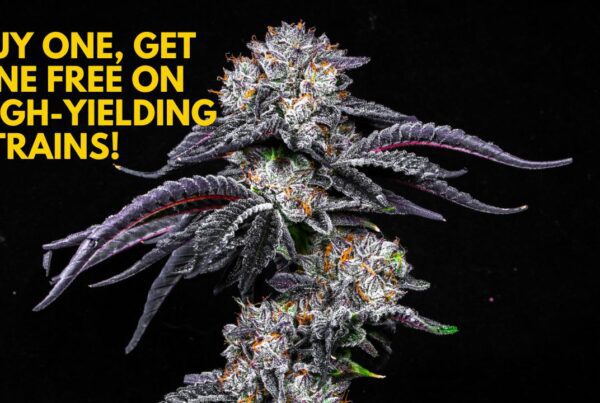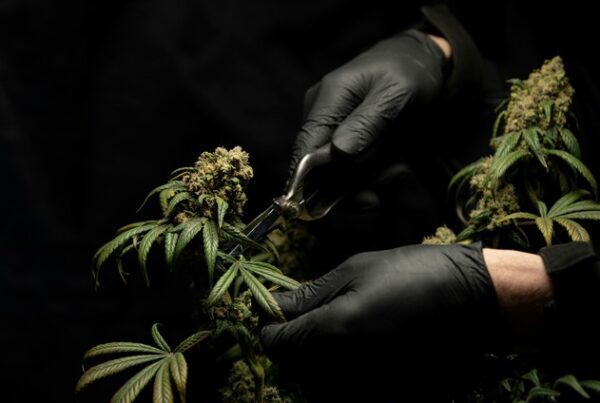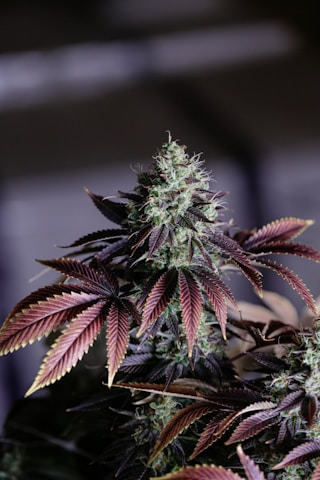Maximizing Indoor Cannabis Growing Efforts
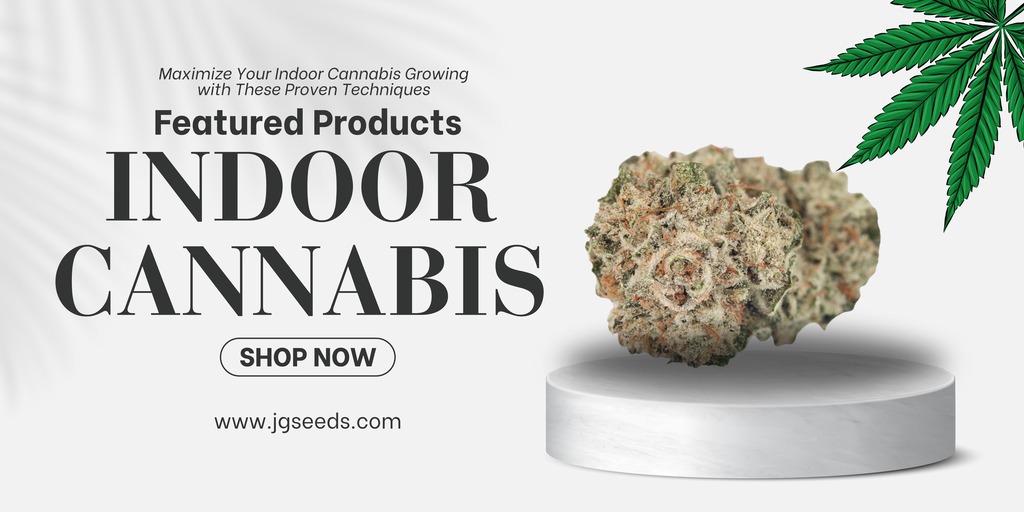
Maximize Your Indoor Cannabis Growing with These Proven Techniques
Are you looking to maximize your indoor cannabis growing efforts? Discover the secrets to success with these proven techniques that will take your cultivation skills to the next level. From optimizing lighting and temperature conditions to mastering nutrient delivery systems, this guide will provide you with the essential knowledge needed to achieve outstanding results. Whether you’re a seasoned grower or just starting out, understanding the best practices for indoor cannabis cultivation is crucial. Join us as we delve into the world of indoor growing and unlock the potential of your cannabis plants like never before. Get ready to elevate your yields and quality with expert tips and tricks that are sure to make a difference in your growing journey. Let’s embark on this exciting adventure together and transform your indoor cannabis garden into a thriving oasis of green goodness.
Setting Up Your Indoor Grow Space
Choosing the Ideal Location for Your Indoor Grow Room
When embarking on the journey of setting up your indoor grow space, selecting the perfect location becomes the foundational step for ensuring the success of your indoor garden. Factors such as access to natural light, proper ventilation, and proximity to water sources play a vital role in determining the health and growth potential of your plants. Additionally, consider the convenience of accessibility for regular maintenance and monitoring to foster a nurturing environment.
Essential Equipment and Setup Requirements
With the location secured, the next phase involves acquiring the essential equipment and meticulously setting up your indoor grow room. Beyond the basics, such as grow lights, ventilation fans, and a reliable watering system, delve into the realm of nutrient solutions tailored to your specific plants. Explore various container options to provide ample space for root development and growth. Implementing a comprehensive ventilation system is crucial to maintaining consistent temperature and humidity levels essential for robust plant growth.
Furthermore, optimizing your indoor grow space involves creating dedicated areas for each stage of plant development. From nurturing seedlings to supporting flowering plants, delineating separate spaces ensures that each growth phase receives the precise care and environmental conditions necessary for flourishing. Consider incorporating shelving or designated surfaces to organize and streamline your indoor garden setup, promoting efficiency and maximizing space utilization.
In addition to the physical setup, consider incorporating sustainable practices such as composting organic waste and utilizing energy-efficient lighting solutions to minimize environmental impact. Regularly assess and adjust your indoor grow space to meet the evolving needs of your plants, fostering a dynamic and thriving indoor garden ecosystem.
Maximizing Plant Health and Yield
Achieving optimal plant health and maximizing yield in your indoor grow space requires a holistic approach that encompasses various aspects beyond location and equipment. Pay close attention to plant nutrition by implementing a feeding schedule that aligns with the specific requirements of your plants at different growth stages. Utilize organic fertilizers and supplements to enhance soil quality and promote robust growth.
Moreover, pest management is a critical aspect of indoor gardening. Implement integrated pest management strategies to prevent infestations and diseases that can compromise your plant’s health. Regularly inspect your plants for signs of pests and diseases, and take prompt action to address any issues to maintain a thriving garden.
Continuous Learning and Adaptation
Indoor gardening is a dynamic endeavor that requires continuous learning and adaptation to optimize plant growth and overall success. Stay informed about the latest advancements in indoor gardening techniques, technologies, and plant care practices. Experiment with different growing methods and plant varieties to expand your knowledge and enhance your gardening skills.
Furthermore, keep detailed records of your indoor garden activities, including planting dates, maintenance routines, and growth observations. By documenting your experiences and outcomes, you can identify trends, successes, and areas for improvement, enabling you to refine your indoor gardening practices and achieve greater success over time.
Conclusion
Setting up your indoor grow space is a rewarding and fulfilling journey that offers numerous benefits, from cultivating fresh produce year-round to creating a tranquil green oasis in your home. By carefully selecting the ideal location, acquiring essential equipment, implementing sustainable practices, and focusing on plant health and continuous learning, you can establish a thriving indoor garden that brings joy and satisfaction. Embrace the creativity and nurturing spirit of indoor gardening, and watch your plants flourish in a space designed with care and dedication.
Section: Selecting the Best Cannabis Strain for Indoor Cultivation
When it comes to cultivating cannabis indoors, selecting the right strain is crucial for a successful harvest. In this section, we will delve into the key factors to consider when choosing a strain for indoor cultivation and explore some of the best strains that are known for maximizing indoor yields.
Factors to Consider When Choosing a Strain for Indoor Cultivation
- Growth Characteristics: Consider the height, branching patterns, and overall size of the plant to ensure it fits well within your indoor space.
- Light Requirements: Different strains have varying light requirements, so choose a strain that matches the lighting setup you have in place.
- Flowering Time: Some strains have shorter flowering times, which can be beneficial for indoor growers looking to harvest their crop sooner.
- Yield Potential: Look for strains that are known for high yields to maximize the output from your indoor grow.
Best Strains for Maximizing Indoor Yields
- Northern Lights: A classic indica strain known for its resilience and generous yields, making it a favorite among indoor growers.
- White Widow: This hybrid strain is prized for its potency and ability to produce dense, resinous buds, ideal for indoor cultivation.
- Blue Dream: A popular sativa-dominant hybrid that offers high yields and a balanced effect, making it a great choice for indoor growers seeking quality and quantity.
Choosing the right cannabis strain for indoor cultivation can significantly impact the success of your grow operation. Beyond the factors mentioned, it’s essential to consider the aroma profile, nutrient requirements, resistance to pests and diseases, and the overall growing difficulty of the strain. Each grower’s preferences and cultivation setup will influence the ideal strain choice.
Moreover, experimenting with different strains can be a rewarding experience, allowing you to discover unique flavors, effects, and growth patterns. Some cultivators opt for a variety of strains to diversify their harvests and cater to different consumer preferences.
In addition to the strains mentioned, other notable options for indoor cultivation include OG Kush, Girl Scout Cookies, and AK-47. These strains are renowned for their potency, flavors, and yields, providing growers with a wide range of choices based on their preferences.
By exploring the diverse world of cannabis strains suited for indoor growing and understanding the specific needs of each plant, indoor cultivators can tailor their cultivation practices to optimize yields, potency, and overall quality. Whether you prioritize high THC content, unique terpene profiles, or ease of cultivation, there is a perfect cannabis strain waiting to be cultivated in your indoor garden.
Nutrients and Feeding Strategies for Indoor Plants
Indoor plants require proper nutrients to thrive and grow successfully. Understanding the role of nutrients in plant growth is essential for every plant parent. Different nutrients play vital roles in plant development, such as nitrogen for leaf growth, phosphorus for root development, and potassium for overall plant health. It is crucial to provide a balanced mix of these nutrients to ensure your indoor plants remain healthy.
Developing a tailored feeding schedule is key to maintaining the optimal health of your plants. Factors such as plant type, size, growth stage, and environmental conditions all play a role in determining the feeding requirements. Research the specific needs of each plant species you own and create a feeding schedule that aligns with those requirements. Overfeeding or underfeeding can lead to nutrient deficiencies or toxicities, impacting the overall health of your indoor plants.
By understanding the importance of nutrients and developing a personalized feeding strategy, you can ensure your indoor plants thrive and bring a touch of nature into your home.
The Role of Macro and Micronutrients: Unlocking Plant Growth Potential
Macro and micronutrients are essential for the growth and development of indoor plants. Macro nutrients, including nitrogen, phosphorus, and potassium, are required in larger quantities and play fundamental roles in plant physiology. Nitrogen aids in chlorophyll production, promoting lush green foliage, while phosphorus supports strong root development and flower formation. Potassium regulates various metabolic processes, enhancing overall plant vigor and disease resistance.
In contrast, micronutrients are needed in smaller amounts but are equally important for plant health. These include iron, zinc, manganese, and others, each contributing to specific functions within the plant. Iron, for example, is crucial for photosynthesis and enzyme activation, while zinc facilitates hormone regulation and protein synthesis.
Balancing the pH Levels: Creating an Ideal Growing Environment
In addition to nutrient considerations, maintaining the proper pH levels in the growing medium is vital for nutrient uptake. Different plants have varying pH preferences, with most indoor plants thriving in slightly acidic to neutral conditions. Conduct soil tests periodically to monitor pH levels and adjust as needed to provide an optimal growing environment for your plants.
Feeding Strategies Based on Growth Stage: Meeting Evolving Nutrient Needs
As plants progress through different growth stages, their nutrient requirements change. Seedlings and young plants require higher levels of phosphorus to support root development and early growth. Transitioning to a balanced mix of nutrients during the vegetative stage promotes healthy foliage and stem growth. Flowering plants benefit from increased potassium levels to support flower formation and overall reproductive success. Tailoring your feeding schedule to accommodate these changing needs ensures that your indoor plants receive the necessary nutrients at each stage of growth.
Environmental Factors and Feeding Frequency: Adapting to Plant Conditions
Environmental factors such as temperature, humidity, and light intensity influence plant metabolism and nutrient uptake. Adjust your feeding frequency based on these conditions to prevent nutrient imbalances. During periods of active growth, plants may require more frequent feeding to support their development. Conversely, in dormant stages or under low-light conditions, reduce feeding to avoid nutrient buildup and potential toxicity.
Monitoring Plant Health: Recognizing Nutrient Deficiencies and Excesses
Regularly monitor your plants for signs of nutrient deficiencies or excesses. Symptoms such as yellowing leaves, stunted growth, or leaf discoloration can indicate nutrient imbalances. Address these issues promptly by adjusting your feeding schedule or supplementing with specific nutrients as needed. By staying vigilant and responsive to your plants’ changing needs, you can prevent nutrient-related problems and promote long-term health and vitality.
Nutrient management and feeding strategies are crucial aspects of indoor plant care. By understanding the role of nutrients, balancing macro and micronutrient levels, maintaining appropriate pH conditions, and adjusting feeding schedules based on growth stages and environmental factors, you can support the optimal growth and health of your indoor plants. Stay attentive to your plants’ needs, experiment with different feeding approaches, and enjoy the rewarding experience of nurturing flourishing indoor greenery.
Pest and Disease Management in Indoor Cannabis Growing
As a cannabis grower, ensuring the health and vitality of your plants is essential for a successful harvest. Indoor cultivation presents unique challenges, with pests and diseases posing significant threats to your cannabis crop. In this comprehensive guide, we will delve into the intricacies of pest and disease management in indoor cannabis growing, equipping you with the knowledge and strategies needed to safeguard your plants.
Identifying and Addressing Common Pests and Diseases Indoors
Early detection is key to combating pests and diseases effectively. Here are some vital aspects to consider:.
- Spider Mites : These minuscule pests can rapidly multiply and damage your plants. Look out for fine webbing and stippling on leaves.
- Aphids : These sap-sucking insects can weaken plants. Check for clusters of aphids on the undersides of leaves.
- Fungus Gnats : These tiny flying insects lay eggs in the soil. Yellow sticky traps can help monitor their presence.
Regular inspections are crucial. Check for any signs of pests, including eggs, larvae, or adult insects. Implement a proactive approach to pest management to prevent infestations.
Researching common cannabis diseases is imperative. Familiarize yourself with symptoms and treatment options for issues like powdery mildew and botrytis.
Maintaining optimal environmental conditions, such as proper air circulation and humidity levels, is vital to curbing disease spread.
Implementing Organic Pest Control Methods
Organic pest control is not only effective but also environmentally friendly. Consider the following methods:.
- Neem Oil : A natural pesticide that disrupts the growth and reproduction of pests.
- Insecticidal Soaps : Gentle yet effective in controlling soft-bodied insects.
- Beneficial Insects : Introducing predators like ladybugs can help keep pest populations in check.
Companion planting with herbs like basil and mint can act as natural repellents against pests, fostering a symbiotic relationship between plants.
Creating a thriving growing environment through balanced nutrition and proper watering enhances plant resilience against pests and diseases.
By adopting a vigilant approach, maintaining cleanliness, and integrating organic pest control methods, you can effectively manage pests and diseases in your indoor cannabis garden, paving the way for a plentiful harvest and healthy plants.
Advanced Techniques for Maximizing Yields
Training Methods to Increase Yields and Bud Quality.
Maximizing yields and achieving top-quality buds are essential goals for any cannabis grower. To accomplish this, employing effective training methods is crucial. Techniques such as topping, FIMing, and LST (Low-Stress Training) play a significant role in enhancing yields and improving bud quality. Topping involves cutting off the tip of the main stem to encourage the growth of multiple colas, leading to increased yield potential. FIMing, a variation of topping, focuses on pinching the new growth tips to achieve a similar result. On the other hand, LST involves gently bending and tying down plant branches to create a more even canopy, allowing better light distribution and enhanced bud development.
Utilizing Advanced Techniques Like Super Cropping.
Another advanced technique that growers can utilize to maximize yields is super cropping. This method entails gently damaging the plant’s stems to promote increased nutrient flow and stimulate bud development. By strategically bending and shaping the stems, cultivators can encourage lateral growth, improve light penetration to lower branches, and ultimately boost overall yields. However, it is crucial to exercise caution and precision when performing super cropping to prevent causing undue stress to the plants and ensure successful recovery.
Implementing Proper Nutrient Management.
In addition to training techniques, proper nutrient management is vital for maximizing yields and bud quality. Providing a balanced nutrient regimen tailored to the plant’s specific growth stages is essential for promoting healthy growth, robust bud formation, and optimal resin production. By understanding the nutritional needs of cannabis plants and maintaining appropriate nutrient levels, growers can significantly enhance both yield quantity and bud potency.
Optimizing Environmental Conditions.
Creating an ideal growing environment is another key aspect of maximizing yields. Factors such as temperature, humidity, air circulation, and light intensity play a crucial role in plant health and productivity. By optimizing these environmental variables to suit the specific needs of cannabis plants, growers can create an optimal setting for robust growth, efficient nutrient uptake, and enhanced bud development.
Employing Cutting-Edge Technologies.
Advancements in cultivation technologies offer innovative solutions for maximizing yields and improving crop quality. From automated irrigation systems and LED grow lights to nutrient monitoring devices and environmental control systems, utilizing cutting-edge technologies can streamline cultivation processes, enhance plant health, and ultimately increase yields. By incorporating these modern tools and techniques into their cultivation practices, growers can stay at the forefront of the industry and achieve exceptional results in yield and quality.
Mastering advanced techniques, implementing proper nutrient management, optimizing environmental conditions, and utilizing cutting-edge technologies are key strategies for maximizing yields and enhancing bud quality in cannabis cultivation. By integrating these practices into their growing methods, cultivators can elevate their harvests, produce premium-quality buds, and achieve success in the competitive cannabis market.
Conclusion
By incorporating these proven techniques into your indoor cannabis growing routine, you can maximize your yields and ensure the health and vitality of your plants. Remember to pay attention to factors such as lighting, ventilation, nutrients, and overall plant care to achieve the best results. With dedication and the right approach, you can enjoy a successful indoor cannabis growing experience.

